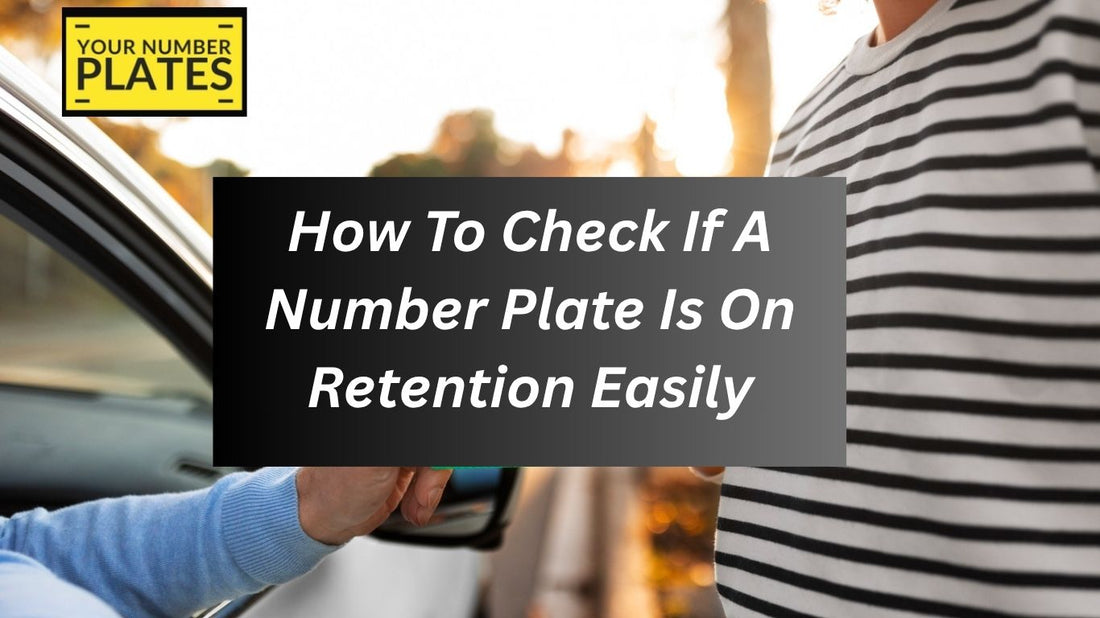1. Introduction
In the world of personalised registrations, number plates hold significant sentimental and monetary value. Whether you're buying, selling, or transferring one, knowing its retention status is vital. In the UK, this process is governed strictly by the DVLA to ensure transparency and lawful ownership.
2. What Does “Number Plate on Retention” Mean?
When a registration mark is "on retention", it means it has been legally removed from a vehicle and stored (retained) by the DVLA for future use. It is not currently assigned to any vehicle, but it remains in the possession of the person who retained it.
Think of it as putting a valuable asset in a secure vault — untouched but fully owned.
3. Why Would Someone Place a Number Plate on Retention?
There are various practical and strategic reasons:
- Selling a vehicle but keeping the personalised plate.
- Storing a cherished registration until it's assigned to a new car.
- Gifting a plate to someone else without transferring it yet.
- Preventing automatic assignment during vehicle scrappage.
- Retaining preserves control over the number plate without risk of it being issued elsewhere.
4. Who Can Place a Plate on Retention?
Only the registered keeper of the vehicle can request the retention of a plate. The vehicle must be registered in the UK and meet all DVLA requirements, including being taxed or declared off-road (SORN) at the time of application.
5. The Role of the DVLA in Plate Retention
The DVLA acts as the governing body and custodian of all vehicle registrations in the UK. Every retention application is processed and recorded by the DVLA, which issues a certificate of retention—formally known as a V778.
They ensure that the registration is held legally, assignable, and not duplicated.
6. Requirements to Retain a Number Plate
Before you can place a number plate on retention:
- The vehicle must exist (not stolen, scrapped, or exported).
- It must have passed an MOT (if required).
- It should be registered with the DVLA in the UK.
- It must be taxed or have a valid SORN.
- Once approved, the plate is officially detached and retained for a maximum of 10 years (renewable).
7. Documents Involved in Plate Retention
The key document is the V778 Retention Certificate. This proves the right to the registration number and allows you to reassign it to another vehicle at any time.
The certificate contains:
- The registration number
- Expiry date
- Details of the grantee (the person who retains the right to the plate)
8. Key Features of the V778 Retention Document
The V778 is your legal proof of ownership while the plate is off-road. Not to be confused with a V5C logbook, the V778:
- Cannot be used for vehicle tax.
- Does not prove ownership of a vehicle.
- Is necessary for assigning the plate to a new car.
- Always keep it safe. Without it, reassigning the plate becomes a bureaucratic nightmare.
9. How to Check If a Plate Is on Retention – Step-by-Step
To verify the retention status:
Step 1: Check your documents. If you have the V778, it confirms the plate is retained.
Step 2: If you're unsure or do not have documents, you must contact the DVLA directly, as they do not allow public checks on private plates unless linked to a vehicle.
Step 3: Call DVLA customer service or write to them with your query, providing all known details (plate, full name, previous vehicle registration).
10. Online Verification via DVLA Services
The DVLA’s online tools allow you to check vehicle details using a registration number, but retained plates not currently assigned will not show up on these checks. This is a safeguard to protect privacy and data misuse.
For any detailed verification about a retained number, always contact DVLA through official channels.
11. Common Mistakes When Checking Plate Status
- Assuming online vehicle checks reveal retention – They don’t.
- Using third-party websites – Many are unofficial and provide outdated or incorrect data.
- Forgetting to renew V778 – If it lapses, reapplication is needed.
Keep your certificate current and use only DVLA for verification.
12. Can You Check Retention for a Plate Not in Your Name?
No. For data protection reasons, the DVLA does not disclose retention details to individuals who are not the grantee or legally authorised representatives.
If you're buying a plate from someone, ask to see the V778 before money changes hands. It’s your only confirmation of legal right.
13. The Legal Implications of Using a Plate Still on Retention
Driving a vehicle displaying a number plate still on retention is illegal. The registration must be formally reassigned using the V778 before fitting it to a car.
Doing otherwise may result in:
- Vehicle being flagged by ANPR
- MOT refusal
- Invalid insurance cover
- Fixed penalties or fines
14. How to Transfer a Retained Plate to a New Vehicle
Once you’re ready to use your retained plate:
- Apply online at gov.uk/retain-or-assign-a-number-plate
- Use the V778 and the new vehicle’s V5C
- Pay any applicable fees (if due)
- Wait for DVLA confirmation and new documents before physically changing the plates
15. Frequently Asked Questions
Q: How long is the V778 valid for?
A: 10 years, and it can be renewed free of charge before expiry.
Q: Can I sell a plate that’s on retention?
A: Yes. The buyer must be made the ‘nominee’ and then apply for transfer.
Q: What happens if I lose my V778?
A: Contact DVLA to request a replacement. You’ll need to verify identity and ownership.
16. Final Thoughts
Checking whether a number plate is on retention in the UK isn't complicated—if you know where to look and understand the system. The DVLA is the central authority for all things related to registration marks, and ensuring you hold a valid V778 certificate is essential.

